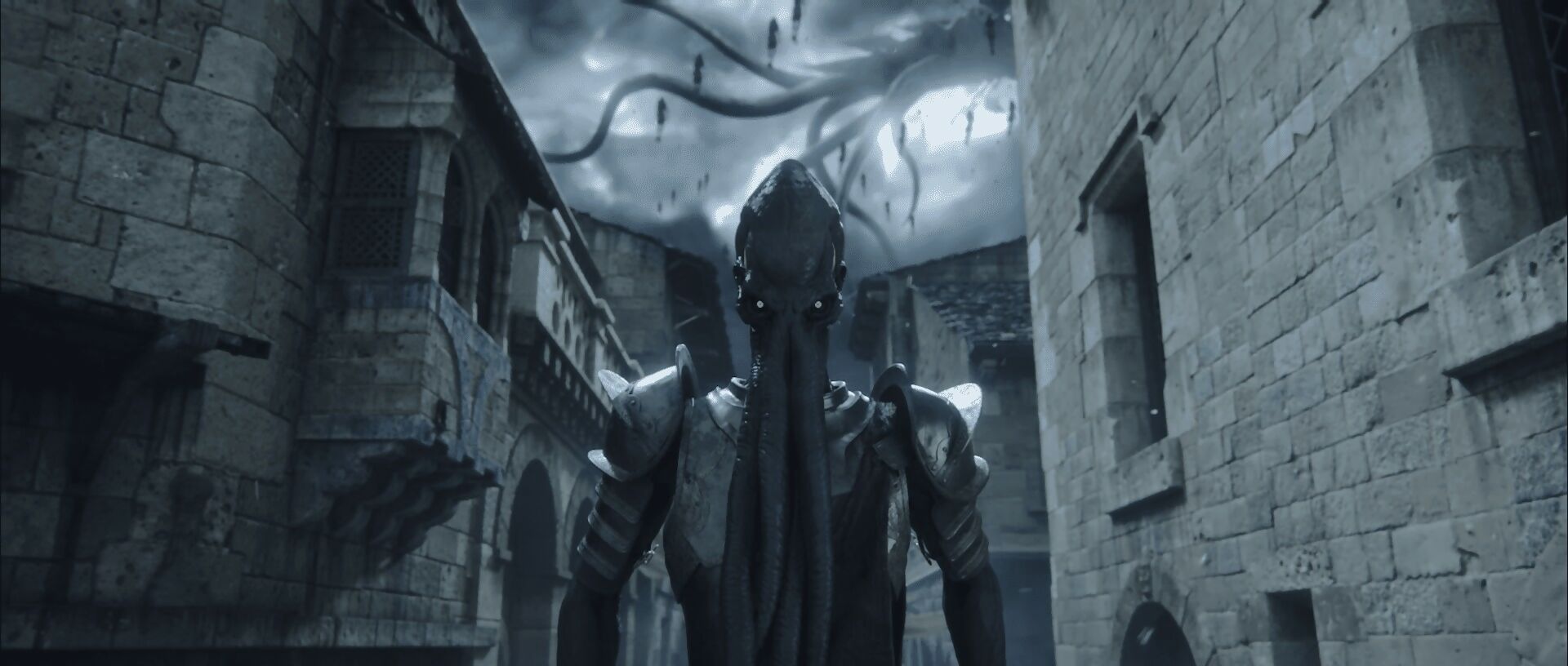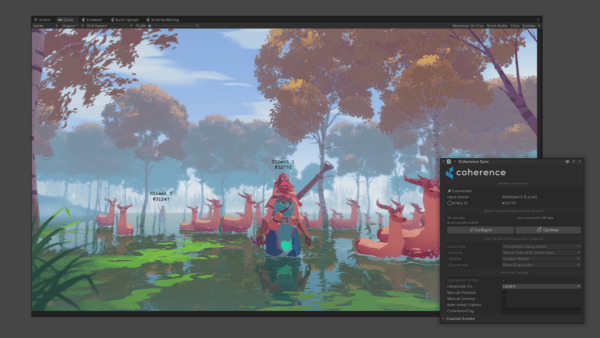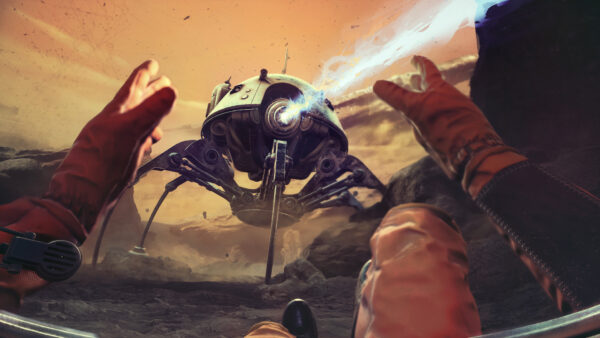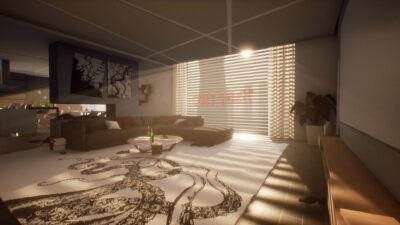
We spoke with Larian Studios for our super-big mega-feature in issue 45 of Wireframe – available here in PDF form, because it’s otherwise sold out – but that’s not everything.
Our chat with David Walgrave, executive producer on the early access CRPG that’s already turning a lot of heads, went on for more words than we could reasonably fit inside the magazine, so there were some words that didn’t quite make the word-cut.
What does that mean? Well, it means here’s a bit of extra interview just for you. Aren’t we kind?
How did Larian’s approach to Baldur’s Gate III differ to that of the Divinity series?
From a writing point of view everyone started reading all the Forgotten Realms novels that were out there – maybe not literally all of them, but a lot of them. The writing team started Forgotten Realms University – they said ‘this is now the book we’re going to read, and there will be an exam on Friday’. They really did that. They needed to become the lore police that we had met in Seattle, who could constantly give us answers and offer a ‘yes, but…’ and this and that. So they started that.
The systems design people started learning the player handbooks by heart – these are things we never had to do, we used to be able to just come up with whatever. We pulled stuff out of thin air. It’s going to sound strange, but even when it comes to Divinity we were bending the rules – no one ever said ‘you can’t do this because in Divinity 2 this happened’. We could always make something work if we wanted it to. Some people thought this could be very limiting because you have to follow their rules and designs, but in the end it proved so vast, so huge, that there is no limit to the imagination of all these people that have been building D&D for the last 30 or 40 years. There’s so much to pick from.
There is no limitation – you can still use your own fantasy and imagination, but if you don’t know where to go to you just open one of the many books you have and you’re immediately inspired.

Looks like a nice, trustworthy chap.
Are you given any limitations within the D&D universe, say for creatures or classes, or regions you can use and suchlike?
It really was a case of ‘here’s everything, choose from it’. In the beginning we said we probably wouldn’t be able to build every class and tried to figure out which ones we thought would be most popular – Wizards of the Coast didn’t have a problem with that, they didn’t say ‘don’t use this class’ or ‘focus on that class’, they really wanted us to stick to Forgotten Realms and basically that was it.
If we could come up with a good reason to bring in something from a completely different realm we’re allowed to. I remember when we went to Seattle they introduced us to a system where we would have to upload files and they’d have to approve them, and we started becoming a bit… not afraid, but it was something where we’d need to go through this process of approvals, and that made me a bit weary. But I think they just had to present to us that ‘this is a thing that exists’, because we haven’t been using it that often – we just talk to each other on Slack.
We upload documents through the system for legal reasons, but if they do give feedback it’s usually like ‘this doesn’t fit with this in that book’, or ‘you’ve forgotten that happened’, but usually it just goes through immediately.
How do you stop from getting carried away? There’s a fair bit of stuff in D&D, so I hear.
We don’t! One of the things how we build RPGs is ‘let’s put this in and let’s put that in’ – if we would stop designers and scripters and artist from being able to think up all those weird things, we would not be building a Larian Studios game. We constantly react to the stuff that we come up with ourselves – for example, in the tutorial level of Baldur’s Gate III we wanted to explain to you what a mindflayer is, and introduce them, and introduce the intellect devourers.
We wanted to have a corpse there that got tadpoled, so we could also tie that in and explain ‘this is what happened to you, and this is what’s going to happen to you’. It used to be just the corpse, you could inspect it and learn it had been tadpoled and was going to start turning into a mindflayer. Then someone said if it had been tadpoled and it was a corpse then something clearly went wrong, so what happens then? Well, then the tadpole turns into an intellect devourer, using the brain etcetera.
Then someone said if you would inspect it in that case, you should be able to pull out the brain. Usually that’s when normal people say ‘no, that’s enough, it’s just a corpse, you can click on it and investigate it, that’s it’. But this is something we’ve been doing for such a long time when someone comes up with crazy ideas, we just wonder where it’s all going. Eventually it got to the point where now you can pry the brain out of the skull, then it turns into an intellect devourer, and if you’re friendly to it, it follows you around. It has this cute little voice, and it says it’s called Us, and they want to go to the helm of the ship, and it really says like ‘yay! Me and my friend are going to the helm of the ship!’
It’s a horrific thing, but we turned it into something cute – and it all just came to pass because one of the scripters of the tutorial asked what would happen if you could pry the brain from the skull. This is very often how things in Baldur’s Gate III and all of our previous games start: by someone saying something random, and us going ‘hey that’s a good idea’.

Dialogue is, as ever, very important to things.
Read the rest of the Baldur’s Gate III feature in issue 45 of Wireframe – get it here.
Since the last full Baldur’s Gate game it’s fair to say there’s been a resurgence in D&D interest – how do you factor in these relative newcomers?
It’s actually not easy. When we started working on Divinity: Original Sin, we wanted to build a turn-based RPG – we saw back then there was a lack of those, and our publishers back then had never allowed us to make one as they thought it wouldn’t sell. We turned to self-publishing, so then we could do whatever we wanted so we decided to make the turn-based RPG we’d always wanted to make.
We were always very inspired by very old RPGs from the 80s, always inspired by things like D&D and the Dark Eye, but we also thought ‘it’s the 21st century – it shouldn’t be too hardcore or we’re not going to sell too many copies’. It shouldn’t all be 2D or 2.5D, it should be glorious 3D and it should look really good – a lot of players right now do just want a good looking game. If we’re only going to cater to nostalgia, we’re only going to sell 50,000 copies. We wanted to marry the two – we wanted to use the design philosophies behind things like D&D and behind these really old-school RPGs, but at the same time create something that’s accessible.
The problem is that very often when you say accessible people think ‘oh anyone can play it so you’re not making a real game’ or whatever. But you can make something everyone can play, and if you want to dig deeper you can, and if you want to see through all of the systems and challenges and we’ve put in there, you can. This is also why we have the ironman mode in our games; if you really think you’re up to it and you understand all the rules, it’s very hard but people can actually finish the game like this. I can’t even do it, it’s super hard. But that’s also how we approach D&D – we know there are a lot of D&D fans, we have a lot of D&D fans running around in the office saying things like ‘why did we change this rule?’ or ‘this is not how it should be’, but the cool thing about D&D, I think, is that you can have your own house rules and that’s basically what we’re doing and how we’re approaching this. We’re making our own house rules because the medium is completely different and we want the game to be accessible.
By ‘accessible’ I don’t mean you click five times and you’ve finished the game, that’s not how it works, it’s still going to be of a certain challenge. But it should be a lot of fun to play – I’m not saying D&D isn’t fun, but if you really translate what’s in the book to a computer game, it’s not going to be fun, because it wasn’t meant to be a computer game. I hope that we are giving people a good experience in D&D by the way we’ve solved it. I don’t think that when you then start playing D&D tabletop that you will recognise a lot – you won’t 100% realise a lot of the rules that are going on in the background, but I don’t think that’s our job.
How long do you expect Baldur’s Gate III to be in early access? Does this differ at all because it’s Baldur’s Gate, because it’s licensed?
We will be in early access, we think, for a year. To be able to try out stuff. In the meantime obviously we’re also working on everything that’s coming after early access, so we still have a couple of acts to work on. But we never thought it would be different because it’s Baldur’s Gate III, no.

Sneaking isn’t the only option – but it is an option. Huzzah!
Are there any distinct drawbacks to early access that you’ve found with previous releases?
The drawback from a marketing point of view is that you’ll always have the people who are opposed to early access, who’ll call it ‘public QA’ or whatever, or they think it’s a really unfinished thing. Early access has been with us for a very long time now, so we hope that people understand what they’re buying into. We’ve also learned that those people are a minority – they’re vocal, but I don’t think we’re going to lose a lot of sales because of them.
The sheer amount of feedback currently was unexpected, we also didn’t expect to sell that many units in the first week – or even the first day – it was insane. With a lot of users comes a lot of ideas, a lot of feedback, a lot of emails. We automate a lot of stuff like statistic and data gathering, but we also allow people to tell us what they think, and we have people who work on support and gather all that feedback, but we hired a couple more, then a couple more, then a couple more… Right now we’re organising getting the feedback into some readable form, into some system where we can hopefully release some smart artificial thing instead of having to read all of that because it’s so vast. That’s one thing. We need to gather the data then find a way to interpret it.
Then we need to also answer these people in a somewhat non-automated way, because otherwise they’re going to feel like a number. So that’s stuff we’re organising now that we hadn’t foreseen. We had this with Divinity: Original Sin 2 as well, and we thought we had it under control, but we didn’t. Another drawback is that there’s always a small team making sure that the early access version keeps on being updated, so you lose a couple of dozen people on that version of the game – but we also gain a lot from it. I’m not going to say we’re wasting people, or money, or time on that, because we’re not, but sometimes having to take into account that you also have a released live build out there that you need to update, it makes things very complex.

FIGHT FIGHT FIGHT FIGHT!
Read the rest of the Baldur’s Gate III feature in issue 45 of Wireframe – get it here
What’s been the biggest challenge in putting the game together?
I want to say organising a big team on a very complex game. We’re used to building complex games, but now our teams are larger so our tech gets more complex as well. One thing to do a lot of triple-A stuff that we’ve never done before – that was a challenge but we’ve overcome it by researching it and hiring the correct people with experience in it who can tell you what to do. Setting up stuff was okay. But now that we have everything we need to start building this RPG, it’s really organising it and finding a way that Larian Studios wants to do it. We’ve never built a game like this that has all of these features with a team that’s this size.
Larian across the globe now has about 300 people, without the outsourcing and freelancers. Our team used to be 100 people or so. For me, maybe because I’m a producer, it’s about managing everyone and making sure everyone’s got the right priorities and is working on the correct thing. Communication with 300 people is insane – you can have all the tools you want, you can use Confluence to document, Jiro to task manage, Slack, Google Meet, but everything still boils down to people thinking ‘how is this going to impact any other member, any other team, any other department’. That’s the biggest challenge, to make sure that you’re constantly very efficient and flexible.
When we were making Original Sin it was 30 people all sitting in the same room, a big open plan thing, and that’s really simple: you can shout at the animator ‘hey, you forgot to animate the dog!’ and he’d just come back with ‘oh sorry I forgot!’ and he’ll start on it that day. But right now it’s this huge process where you have to get a stamp and a form and request something officially and use the pipeline – it’s all become different and challenging. That to me is the biggest challenge.
Along similar lines, what’s been the simplest, the most straightforward thing?
The fact that we’re making an RPG. Sometimes you realise ‘oh my god I’m working on Baldur’s Gate III!’, but in the end you also know it’s an RPG. This is what we’ve been doing for the last decade and a half. We build RPGs. There’s nothing else that we can make. We can’t make a racing game, I have no idea how to. If we made a racing game in the future, we’d start making drivers with different stats and you could customise your car and build your own track… that’s the way Larian approaches games, it has to be customisable etcetera. We did once make a racing game for children for a client 15 or so years ago. But we know how to make RPGs, that’s been the simplest thing of this project.

Ah, Taman, we knew them well.
You’re using an updated version of the Divinity engine – why go that route? Is there a risk it might feel a lot like Original Sin rather than its own thing… would that even be a problem?
We always stuck to our own editor because we have full control of it, and because we’re making a very specific game. Back when we were making Divinity 2: Ego Draconis we checked out other engines – I think we had a company license then for Gamebryo – but we ended up hacking the source code in such a way that it would allow us to make an RPG with a lot of interactive elements and so on. So one of the things about Divinity games and Larian Studios games is that they’re all highly interactive – they need to be almost realistically interactive, in such a way that when you play any other game afterwards you find yourself clicking and trying to pick up everything, then you find ‘oh, it’s not possible’ – because it’s not Divinity. Being able to do that type of stuff always meant that we had to build our own engine because there was no engine out there that would have so many active objects in the game world. So that’s one of the reasons why.
We also build very specific games, and we found that for instance you can make anything with Gamebryo, but you’re dragging all that baggage with you. It makes it perform poorer, it makes it very complex and hard to understand. So we built very specific things where we know what they have to do. That’s why we have our own engine. It is the Divinity engine, but the Divinity engine we were building allowed us to tell stories in such a way that people always said ‘this feels like a tabletop game, because I can do everything I want, anything I can dream up I can try out in the game, sometimes it feels like you might have even taken that into account’. Like the player might kill this quest-giver – what happens then? So it would be very stupid of us to say with Baldur’s Gate III we should try another engine, let’s try Unreal – because we have this now, we have this experience.
We also knew up front that people would start comparing it to Original Sin. We knew that people would say it’s Original Sin 3, or the Baldur’s Gate mod, or I don’t know what. It’s a bit unfair. I understand where they’re coming from, but it’s a bit unfair to the engine team because they rebuilt about 90% of the engine anyway, otherwise all the stuff we’re doing right now would be completely impossible. There’s a lot of things they had to upgrade and update and rewrite. If Baldur’s Gate III feels like a Divinity game at all it’s not because of the engine, it’s because we are working with the same art director and a lot of the same artists, the same animation director, so when people think they recognise Original Sin in Baldur’s Gate III, it’s usually because it’s still the same people working on it. It’s also a fantasy RPG – you can only come up with so many different landscapes for a fantasy RPG, you’re always going to end up in a forest walking around ruins going into a dungeon. It’s very hard to do something completely different if you’re in the same fantasy world anyway.
Then apart from art we have our own design philosophies that we believe in and that we think are the things that make our games successful – those will always breathe through in whatever we make. We can follow D&D as close as we can, but you’ll always end up thinking like a designer that works at Larian Studios, like ‘how can I make this more appealing? How can I make this really cool?’

Pictured: probably some kind of troll-hunt.
–Read the rest of the Baldur’s Gate III feature in issue 45 of Wireframe – get it here.–





